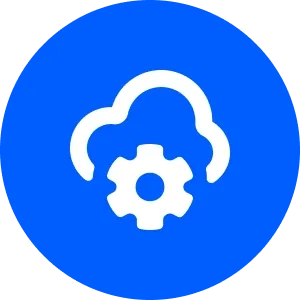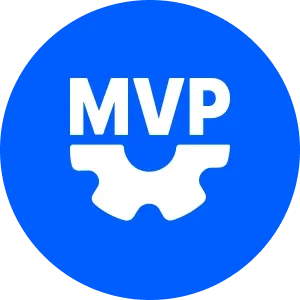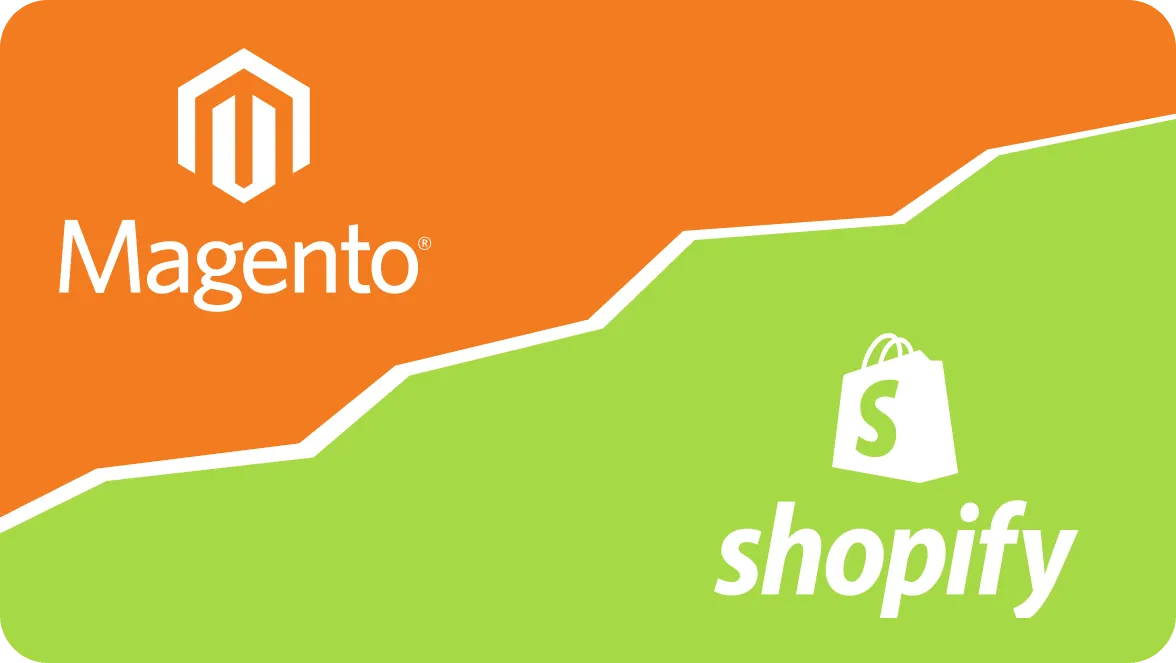
How to develop an MVP for your product while avoiding technical pitfalls? Why do some ideas become a source of monetization while others fail? In this article, you’ll find answers to these questions, including startup performance recommendations and all possible technical issues.
What does MVP mean?
MVP (Minimum Viable Product) is a test version of a product or service with a set of basic functions that provide value for your end consumer. The MVP’s concept includes a cycle with 3 stages:
It allows you to receive a meaningful snapshot of what users need in a product and find out if they’re ready to buy.
MVP development allows you to reduce the project launch time by creating only the necessary functions and start getting real feedback. Thus, the minimum viable product allows:
to test a hypothesis based on real data and prove the viability of an idea
to relegate the possibility of financial losses when launching an unsuccessful product
to decrease costs on eliminating unnecessary functions
to identify unaccounted customer needs
to optimize product testing and speed up the search for errors
to build an initial customer base before a full-scale launch
The key concept of building an MVP is creating a real workable product that can be offered to customers, then getting the reaction to it and finally refining the solution according to the preferences of the user.
About 45 % of startup failures are due to lack of market demand and mistiming of the release. An MVP ensures that the product is either in demand or needs to be quickly abandoned because it’s not commercially feasible.
Source: CB Insights Survey
Most of the well-known startups in the US and Europe started with a simple MVP version. Companies test the market, build a customer base, prove their idea to investors and get necessary investment capital. After the market validates the need for the product, then it’s possible to start adding new options to the product and continue to build on its tools.
What are MVPs for SaaS startup
SaaS startups are noted as cloud technologies that help to use the software as an online service without installing it. The user accesses the service through a browser or API. The SaaS model is a ready-made solution — pay for access and gain access in a flash.
The most widely known example of SaaS is Google Docs. No specific drivers or installations — get an account, follow the link and work with texts, spreadsheets and presentations via browser. When it comes to SaaS, the user can contact the company admin at any time. Regular updates are available to all customers of the service. For a large company, this means saving on software. The program doesn’t need to be purchased and separately installed on each computer as several users can work in it. Only username and password are needed for access.
Back to the beginning of the MVP’s cycle: development → measurement → feedback learning. The logical connection behind MVPs helps start your SaaS product: the longer consumers wait for a product to be developed, the more money is spent on development, thus the more chances of risks and failures.
Money is worth more today than tomorrow. An MVP released at the right time, when enough money has been spent on it, reduces the risk of low ROI and helps with the formation of stable cash flow in the future scaling of SaaS products.
Software companies meet a lot of challenges during product launches. The first one is deciding whether the engineering team is building an MVP, proof of concept, or prototype. All 3 terms refer to a “lightweight” variant of the product but mean different things.
How can a SaaS startup benefit from an MVP?
SaaS MVP for startups is an ideal option for making a minimal investment for a good product, especially if you are working with a reliable technical partner who is immersed in the specifics of your business and has expertise in the domain. What are the other benefits of the MVP approach?
- Time to generate revenue
You get all the feedback data for future upgrades, win over more users and attract more investment without overspending.
- Fast product launch speed
The period of developing an MVP is much shorter than the classic one and the whole process takes from 3 to 6 months.
- User feedback
Because of the feedback, MVPs are often in a process of regular changes. At this stage, the best solution is the “cupcake method”. First, you invite your customers to taste a small cake so that they appreciate the dough, filling, cream and give feedback. If guests like the way the cake tastes, you start making a huge wedding or birthday cake of actual size.
- Partnering with your future investors
When a project is young, it has just entered the market. Investors’ commercial proposals will give you an advantage over the competition and a chance to bring ideas to life. Here are several benefits:
often investor is a guarantor of further product development
additional experience in competent product management
possibility to open preliminary sales and start reimbursing the project budget
- Design testing
Design is a way of communication with the target audience. User experience and sustained brand identity are key factors in brand retention. And finally, design helps to tell a story that can emotionally impact the user. It sets you apart from competitors, makes you brighter, cooler, easy-to-use and clear.
What technical insights should be considered when developing a SaaS MVP?
Everything that was listed above is extremely important for understanding the process of project implementation. To further explore this question in-depth, we decided to show a more detailed description of building a SaaS MVP and related technical issues.
Some common technical pitfalls
We’ve been cooperating with startups for a long time we know the specificity of this business. Usually a startup needs to get a working version of the product up and running in a short period of time. The market is growing and changing — every day counts. There is an urgent need to get to the market quickly and test the product on real users.
One of the most common pitfalls is the hired team’s attempts to make the “best of the best product” for clients, as odd as it may sound. Technical teams often try to make a high-quality product immediately that can be easily expanded in the future by adding different features, and reusing them. The team “covers” everything with testing and creates a product with scalable functionality from the start. Developers explain that it will be easier for you to scale, grow and expand functionality. The software will be able to handle a large number of simultaneous launch requests.
From our professional experience, we suggest that the client doesn’t need a “perfect product” in the beginning. The most crucial thing is to launch a less complicated product and make sure that the market really needs it. Most likely, there will be a situation after entering the market where the audience asks for new features which absolutely don’t fit the original core architecture. It turns out that the primary plan doesn’t fit the real market needs, and as a result, the client won’t be able to use initially developed functionality. Sometimes, the audience requires different functionality than the client was counting on. Thus, there is an awareness of what features the product needs and which essentials need to be redone. So, the client is involved in the development of the MVP from scratch.
To avoid such a situation, you need to cooperate with a trusted technical partner who can strike a balance between the present important requirements and possible future ones. This will empower you to enter the market quickly and efficiently, collect user feedback and continue to add important functionality to the product, relying on surveys, numbers, feedback and data.
The best practices from a technical point of view
Try not to chase scalability and perfect quality of an MVP as you’ll most likely need to add new features or change design or even start the development from scratch. It’s important to go to the market with a minimal functionality and start testing it with real users.
It would be better not to implement all requests in a hurry. It’s necessary to understand that the product is needed by more than a bunch of people. This depends on the usefulness of the products’ characteristics and target audience. If your product isn’t highly specialized, but aimed at a wide audience, then analyze all the feedback and look for patterns in the requests.
Factors that enable fast and high-quality development processes
Team cohesion and motivation affect the final result. The team must be motivated to make a quality product. At the same time, it’s necessary to find the right balance between speed, quality and take into account that the product may be changed in the future.
If you build MVP with Front and Back development, then look for Full Stack devs — they are certainly rare, especially in “free flight”, but this will definitely help you to move faster. If you don’t have Full Stack engineers in your team, then it would be good to hire at least a Tech Lead or Team Lead Full Stack to ensure proper technical support of the project. Developers with DevOps knowledge are “a goldmine” for an MVP startup, and highly valuable for the development process.
The must-have features for SaaS products
If we are considering SaaS startups, then there will be several necessary applications:
Admin Dashboard — a common control panel, where the startup owner or startup managers will be able to manage each new subscriber, set functionality and perform some kind of analytics on B2B users.
B2B Dashboard/App — a console, where B2B customers will be able to use the functionality that the SaaS product provides.
B2C Client App — an option that allows B2B customers to sell this solution under their own brand to end-users.
The admin dashboard will include some types of payment integrations and subscription management systems. Stripe is well suited for dealing with payments. It’s easy to configure, use and connect to your project.
You will need to send messages to the mail when a subscription is purchased or when an account is created. The Sendgrid service is a good fit for this. It’s also easy to use and integrate with any technology. It’s important to start from the core of the application features that will be used by the end-users.
Open-source tools to be considered
Nowadays solutions for quickly launching an MVP are a common story. For example, to create Landing pages we’ve got Tilda, Wix, and other various cloud databases solutions with a complete package. Pay attention to No-Code and Low-Code solutions. This topic is gaining momentum for solutions in MVP development.
Our expertise
An example of a successful MVP implementation is our client AskPorter platform. The service helps to share data and uses AI to optimize properties management. The main goal of the platform is to increase the level of customer loyalty and satisfaction.
Tasks
There was a request for an efficient real-time service that instantly accepts orders and finds the right specialists online, simplifying and speeding up the solution of users’ home repairs like accidental water or gas leaks. To optimize the dispatch of qualified specialists so that homeowners don’t have to rely on building management and wait for repairmen to fix problems. Untimely resolution of such issues leads to financial losses and repairs.
Solution
The client wanted to optimize all management costs and provide users with a transparent tool to solve their problems in real-time. If a problem occurs, end customers can call the repair specialist online and track work status from the platform.
Result
We successfully implemented the project within the time frames and didn’t go beyond the specified budget. As a result, AskPorter won the funding program.
The main goal of MVP software development is to reduce the time and effort for testing an idea before running a full-fledged product.
We have experience with expertise and solving the technical issues of startups. Funding risks and restrictions, force majeure and adaptations to external changes can make adjustments. But we are bypassing all the pain points. That’s why our solutions became win-win strategies of development and successful products.
Contact us via link if you are planning to develop an MVP or need consultation in the sphere of startups solutions.




































Was this helpful?
0
No comments yet